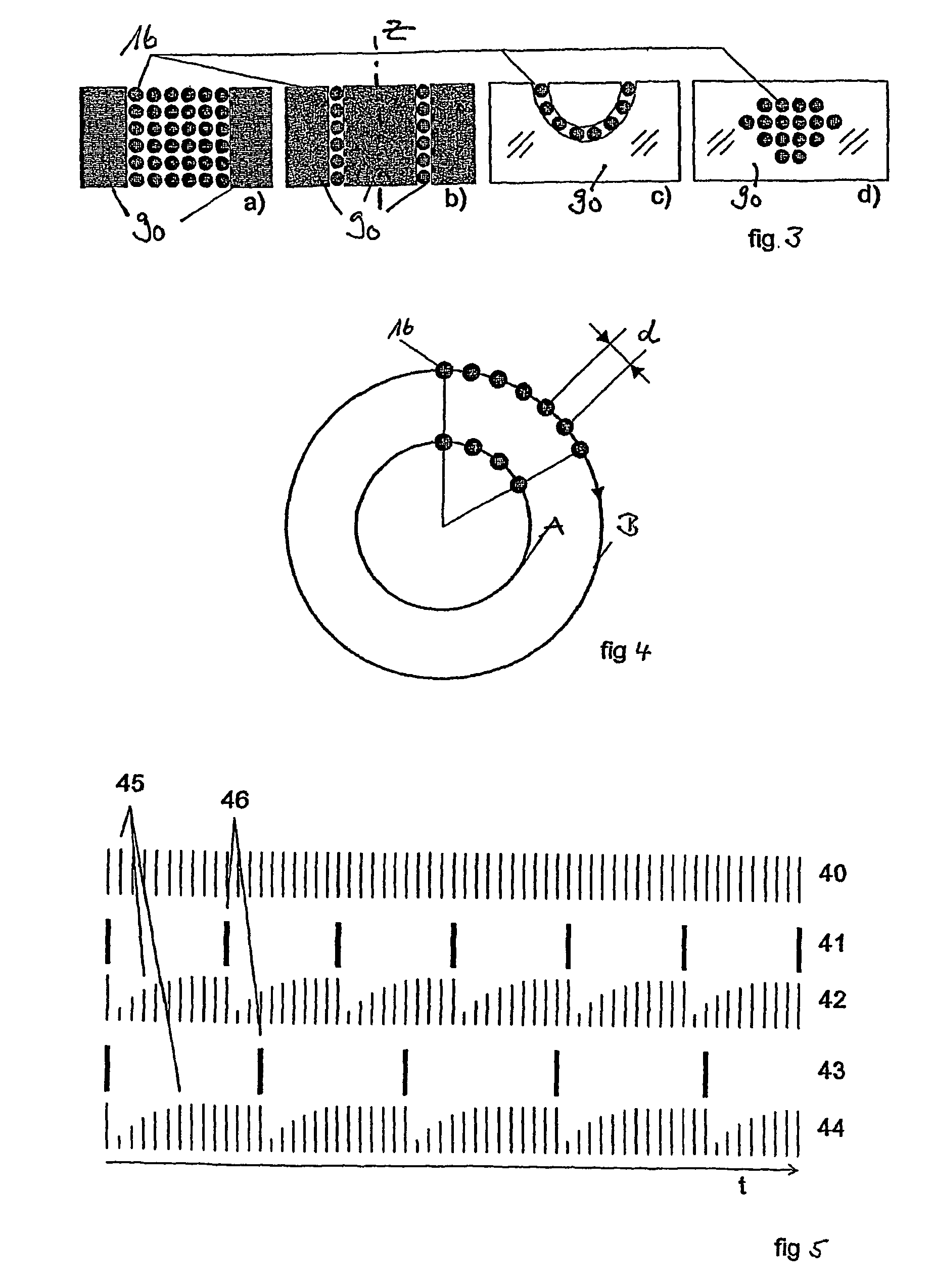Femtosecond laser system for the exact manipulation of material and tissues
a laser system and tissue technology, applied in the field of tissue exact manipulation laser system, can solve the problems of unsuitable industrial or medical use, unsatisfactory use of laser source, and unsuitable use of laser source, and achieve the effect of elegant production, high machining precision, and reduced thermal and mechanical stresses on non-machined areas
- Summary
- Abstract
- Description
- Claims
- Application Information
AI Technical Summary
Benefits of technology
Problems solved by technology
Method used
Image
Examples
Embodiment Construction
[0047]FIG. 1 is a schematic representation of the individual components of an embodiment of a laser system according to the invention. The machining device 1 includes a cavity-dumped fs oscillator as beam source 11. The laser beam 15 is decoupled via mirrors and a beam splitter 57 onto a beam-expansion lens system 21. The expanded laser beam 15′ is then deflected in XY direction onto a beam-focusing apparatus 24 via a beam-deflection apparatus, such as for example a scanner. This is displaceable in the Z axis and thus allows the displacement of the focus point by displacement of the beam-focusing apparatus along the arrow Z. Alternatively, a focusing optical system with adjustable focal length can be used in order to displace the focus position in Z direction in controlled manner. The focused laser spot 16 is thus steered onto the material 90 to be machined which is held in position by a fixing device 32. Here, the material 90 is a contact lens to be machined. The spot 16 can also b...
PUM
| Property | Measurement | Unit |
|---|---|---|
| Time | aaaaa | aaaaa |
| Time | aaaaa | aaaaa |
| Time | aaaaa | aaaaa |
Abstract
Description
Claims
Application Information
 Login to View More
Login to View More - R&D
- Intellectual Property
- Life Sciences
- Materials
- Tech Scout
- Unparalleled Data Quality
- Higher Quality Content
- 60% Fewer Hallucinations
Browse by: Latest US Patents, China's latest patents, Technical Efficacy Thesaurus, Application Domain, Technology Topic, Popular Technical Reports.
© 2025 PatSnap. All rights reserved.Legal|Privacy policy|Modern Slavery Act Transparency Statement|Sitemap|About US| Contact US: help@patsnap.com



